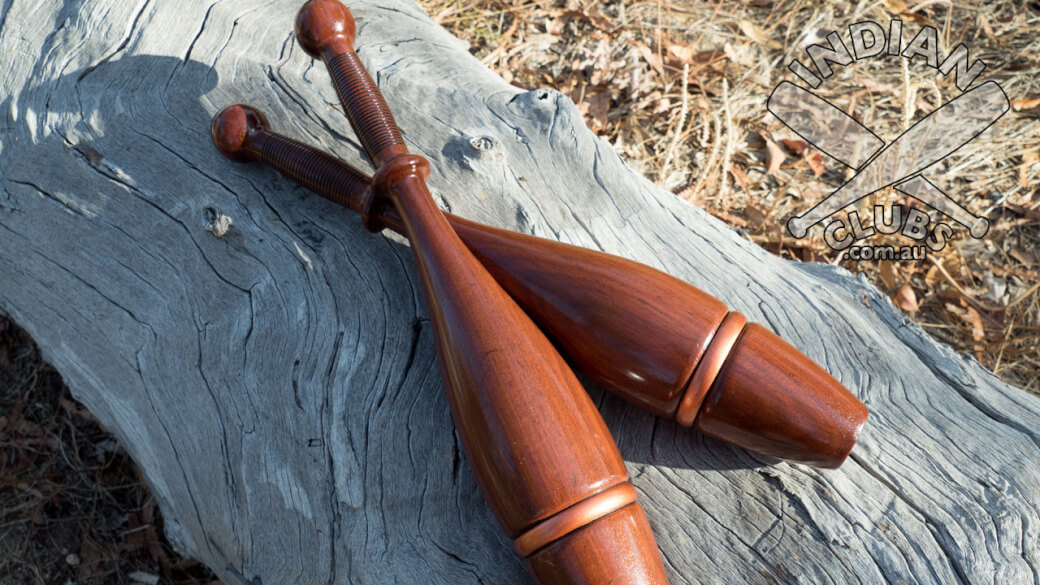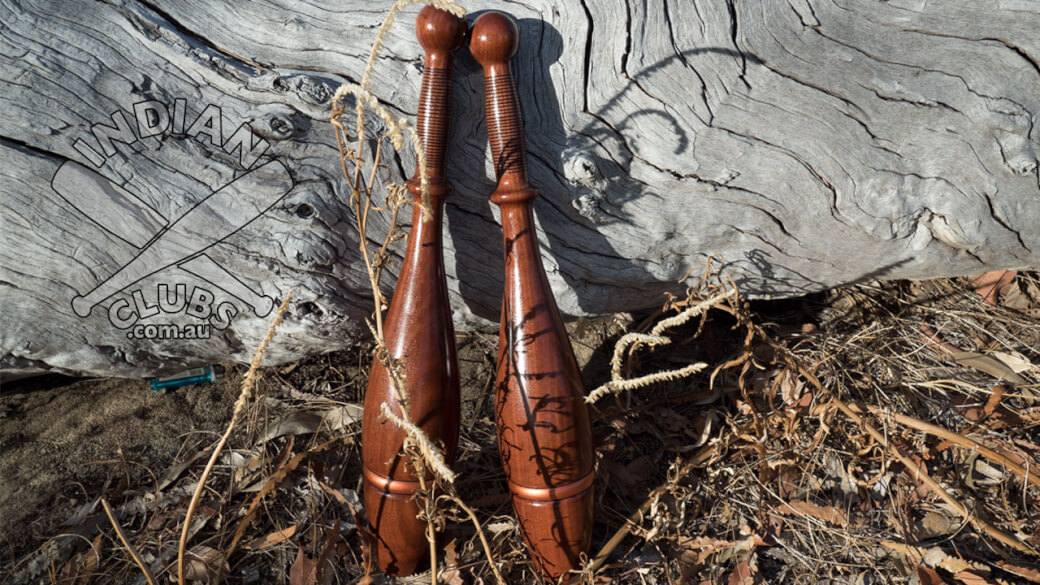A Brief Description of Indian Clubs
There are several advantages to Indian Club swinging. It is a combined exercise and amusement easily adapted to all walks of life, be it a child, office worker, fitness expert or retiree.

Benefits of Indian Clubs
Develop strength, speed, mental agility, suppleness, balance and stamina.
Indian Club Swinging is for everyone
Club swinging can be adapted to all by careful selection of club weight, weights range from 8 ounces, 1lb and 2lbs upwards. It is not necessary to use heavier clubs because these weights will suit most people. Extra intensity can be achieved by placing your feet closer together and steadily increasing the pace of swinging bringing the whole body into action.
Try it to appreciate it
Another advantage from personal experience is the training of muscles on both sides of the body to work in coordination. To appreciate this it is only necessary to try club-swinging. Different muscles moving the joints in various directions are constantly in action, but not sufficiently long enough in any one direction to produce the onset of fatigue, while the free and easy stretching keeps the joints moving freely.
Misconceptions about Indian Clubs
There is a general impression that Indian Club swinging is a complicated form of exercise, needing careful study and lengthy practise to achieve proficiency.
This impression has been fostered by many club swingers and experts, who have hindered their own progress and that of their students by a totally unnecessary classification of various movements, twists, circles and swings, this needless study devoted to the dissection of movements is in reality only varying combinations of two solitary swings which alone comprise the whole art of club swinging. As already stated, club swinging appears an extremely difficult art to the average beginner, and certainly one at which it would be impossible to become an expert without the aid of an instructor.
Easy to learn
On the contrary Indian Clubs are probably the only exercise equipment available where a person can learn to handle skilfully and successfully without any outside assistance or instruction, once the very simple theory of the art of club-swinging is understood. True, more rapid progress can be made when lessons are taken from an expert since by doing so one can readily observe the more advanced combinations and discover without extended study the methods by which they can be practised. Anyone prepared to devote time to learning club-swinging can readily teach themselves once they realise that there are only two district circles or swings.
The two swings
Namely the OUTER and the INNER swings, and that all the pretty and effective, but seemingly indicate movements and circles are but varied combinations of these two. Every possible movement of flexion, extension, or rotation of the upper arm, shoulder girdle or wrist is made by one of these two SWINGS, according to the varying positions assumed by the arms.
Complete circular movements
It needs to be understood that all SWINGS must be complete circular movements, with the arms held in various positions, and that any swing with both arms is a combination.
Definition of OUTER and INNER swings
Assuming a standing position with one’s feet a shoulder-width apart, imagine a vertical line from your face to the ground between your feet. This is the centre line dividing the left and right of your body.
OUTER or OUTWARD swing.
To make an OUTER swing the club moves away from the centreline first.
INNER or INWARD swing.
To make an INNER swing the club crosses the centreline first.


Comments on this entry are closed.